Gardening is a magical world where curiosity meets the soil, and what better way to introduce children to its wonders than through hands-on activities right at home? Whether you’re a novice gardener or someone with years of experience, involving kids in gardening can transform your green space into a vibrant, educational playground. This delightful journey not only nurtures plants but also cultivates young minds, encouraging them to explore the natural world with excitement and care.
For those just starting out, we’ll guide you through simple, enjoyable projects that require minimal resources but promise maximum fun and learning. If you’re a seasoned gardener, you’ll discover new ways to engage young hearts and hands, enriching your gardening routine with fresh perspectives. From planting seeds to creating miniature gardens, these activities foster a shared sense of accomplishment and wonder, making gardening a cherished family affair.
In this article, you’ll learn how to tailor gardening activities to your child’s age and interests, ensuring every moment spent in the garden is both educational and fun. We’ll provide tips on safety, sustainability, and creativity, helping to instill lifelong gardening habits that are as rewarding for the earth as they are for you and your children. So, gear up to dig into the world of gardening with your little ones—because every seed you plant today promises a bloom of joy tomorrow.
Choosing Easy-to-Grow Plants
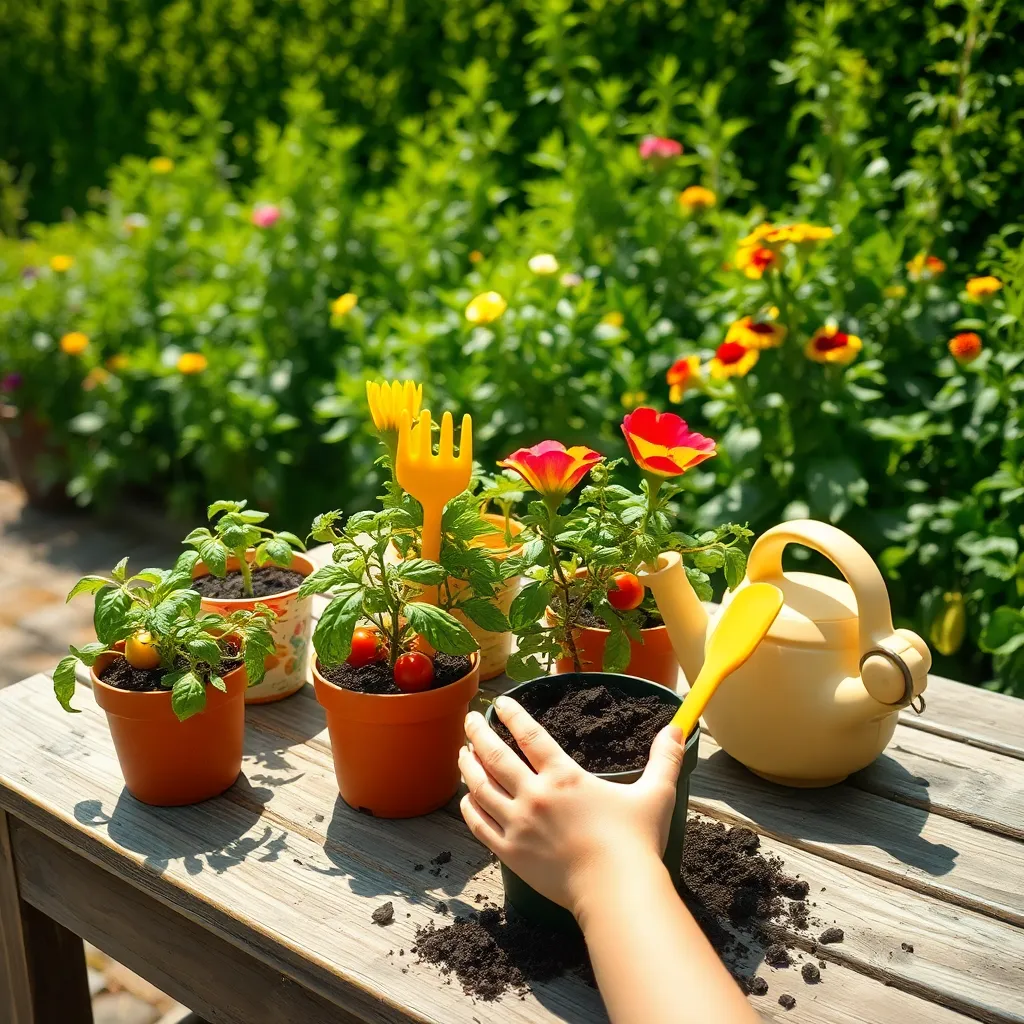
Starting a garden with kids can be a rewarding experience, especially when choosing plants that are easy to grow. Sunflowers are a fantastic choice because they are both hardy and visually striking, making them an exciting option for children.
Sunflowers thrive in well-drained soil and require full sun to grow their best. Water them deeply but infrequently, ensuring the soil is dry between waterings to prevent root rot.
Another excellent choice for kids is radishes, as they are quick to germinate and can be harvested in as little as 30 days. Plant them in loose, nutrient-rich soil and keep them consistently moist for optimal growth.
Herbs like basil are not only easy to grow but also useful in the kitchen. Basil prefers warm weather, so plant it after the last frost and water it regularly to keep the soil slightly moist.
For a touch of color, consider planting marigolds, which are low-maintenance and pest-resistant. These flowers enjoy full sun and well-drained soil, making them an ideal addition to any child’s garden project.
Creating Fun Planting Projects
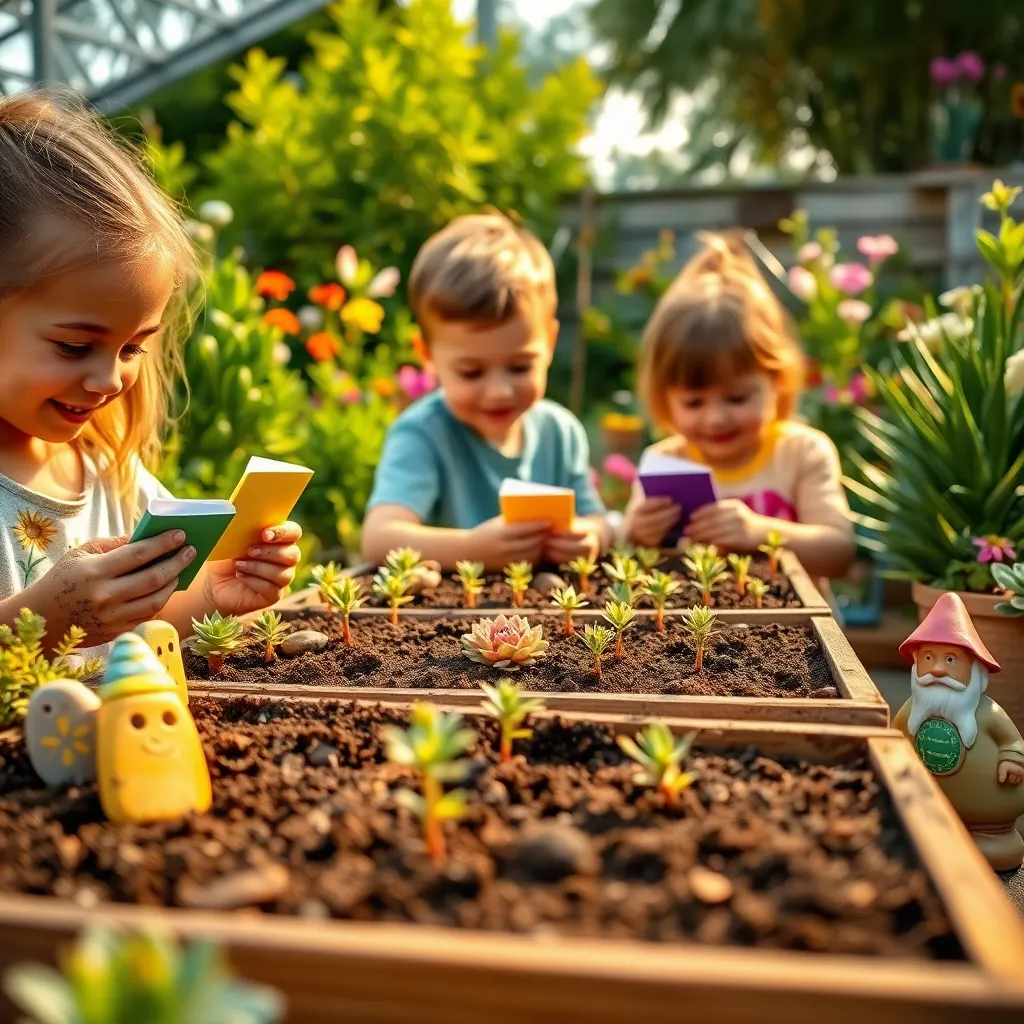
Engaging kids with fun planting projects can spark their interest in gardening. Start by creating a simple herb garden in a container, using easy-to-grow varieties like basil, mint, and parsley.
Choose a large container with drainage holes to prevent waterlogging. Fill it with a mix of potting soil and compost, which will provide the necessary nutrients for the herbs to thrive.
Ensure the container is placed in a sunny spot, as most herbs require at least six hours of sunlight a day. Encourage kids to water the plants regularly, keeping the soil moist but not soggy.
Another fun project is creating a miniature fairy garden, which combines creativity with gardening. Use shallow trays or old pots and fill them with a mixture of succulents and small, hardy plants.
Incorporate elements like small pebbles, twigs, and tiny figurines to build a whimsical scene. Teach kids to gently water the garden, using a spray bottle to avoid overwatering these drought-tolerant plants.
For a more advanced project, try growing vegetables from kitchen scraps, such as lettuce or celery. Place the base of the vegetable in a shallow bowl with water, changing the water every few days to prevent mold.
Once roots and new leaves appear, transplant the vegetable into a pot filled with potting soil. This project not only teaches recycling but also demonstrates the plant growth cycle from start to finish.
Crafting DIY Garden Markers
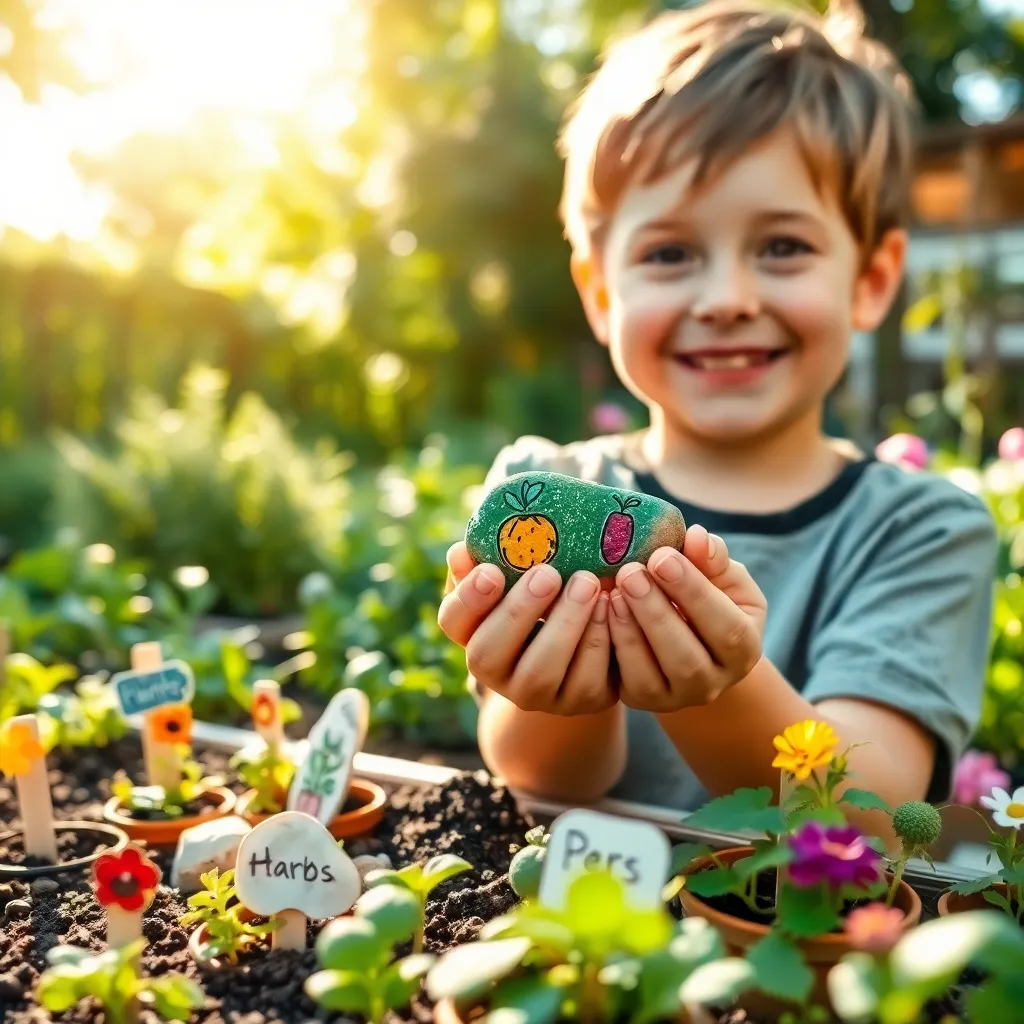
Creating DIY garden markers is a fun and educational activity for kids, helping them learn about different plants while keeping the garden organized. Start by gathering materials such as flat rocks, wooden spoons, or old popsicle sticks, which can be easily transformed into creative markers.
Encourage children to use vibrant paints or permanent markers to decorate and label each marker with the plant name. For a more durable finish, consider sealing the markers with a clear outdoor varnish, ensuring they withstand weather conditions.
Involving kids in this activity not only fosters creativity but also deepens their understanding of gardening. As they create each marker, discuss the specific growing conditions and care requirements of the plant it represents—such as the amount of sunlight needed or the frequency of watering.
For an advanced twist, introduce older kids to scientific plant names or botanical facts to include on the markers. This additional information can serve as a learning tool and spark interest in plant biology and ecosystems.
Once the markers are complete, have the children place them in the garden, aligning them with the corresponding plants. This not only beautifies the garden but also helps them take ownership of their gardening projects, encouraging responsibility and pride in their work.
Engaging Kids with Watering
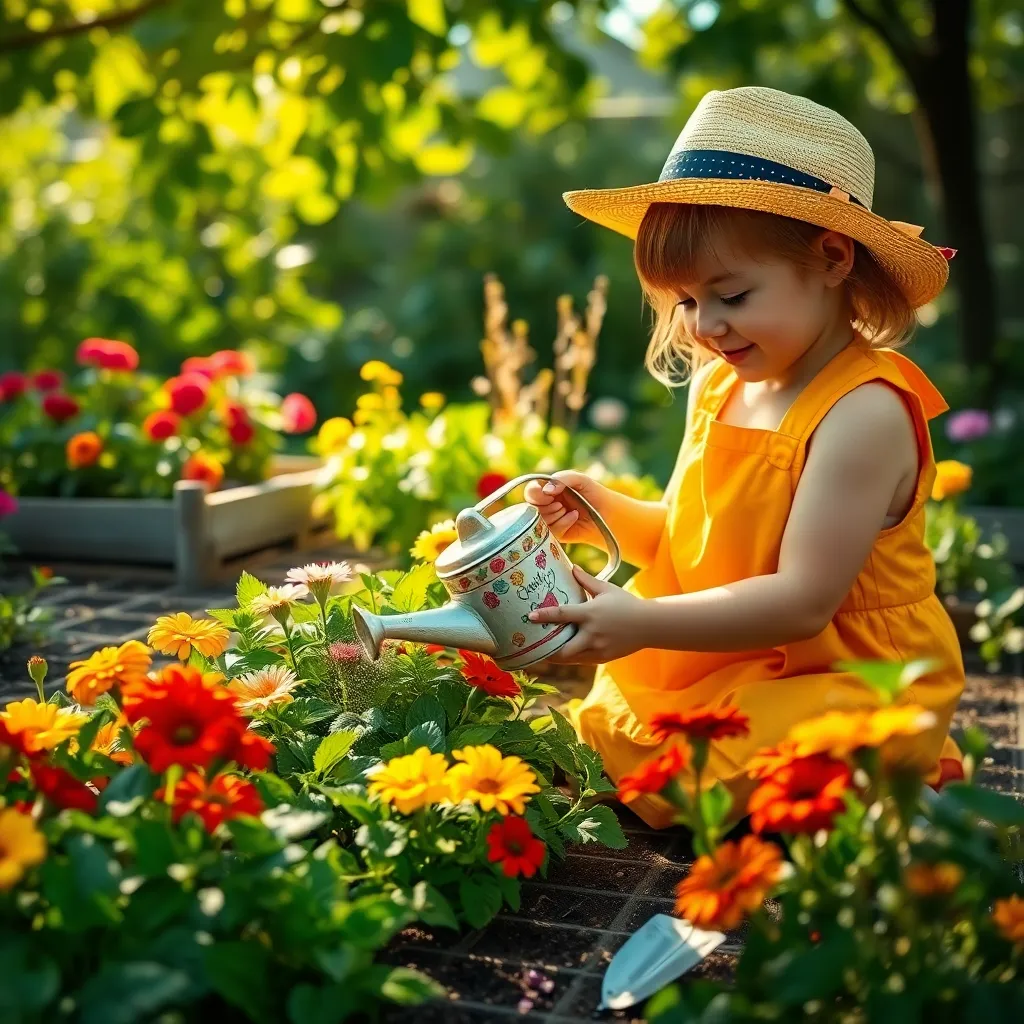
Engaging kids with watering can turn a routine task into an exciting activity. Start by giving them their own small, colorful watering cans that are easy to handle. This not only makes the task more enjoyable but also teaches responsibility and care for plants. To ensure plants receive the right amount of moisture, explain the importance of checking soil moisture before watering. Encourage them to stick a finger an inch into the soil to see if it’s dry enough for watering.
Balance is key when teaching kids about watering, as overwatering can harm plants. Explain that most plants prefer the soil to dry out slightly between waterings. For beginner gardeners, suggest starting with hardy plants like sunflowers, which tolerate occasional drought. You can also introduce them to the concept of grouping plants with similar water needs, making it easier for children to remember which plants to water more frequently.
To make the experience educational, discuss how plants use water to grow and thrive. You might mention that watering in the morning helps reduce water loss due to evaporation and prevents diseases. As an advanced tip, introduce the idea of using rainwater collected in barrels, teaching kids about sustainability and conservation. Incorporating these practices will instill lifelong gardening skills and an appreciation for nature.
Finally, create a watering schedule together to help them understand the routine care plants require. This can be a simple calendar with checkmarks indicating watering days, helping children anticipate and plan their gardening activities. To keep it fun, celebrate milestones like the first sprouting leaf or flower, reinforcing their efforts and nurturing a love for gardening. This practical approach not only engages children but also encourages them to explore and learn through hands-on experience.
Exploring Nature Through Harvesting
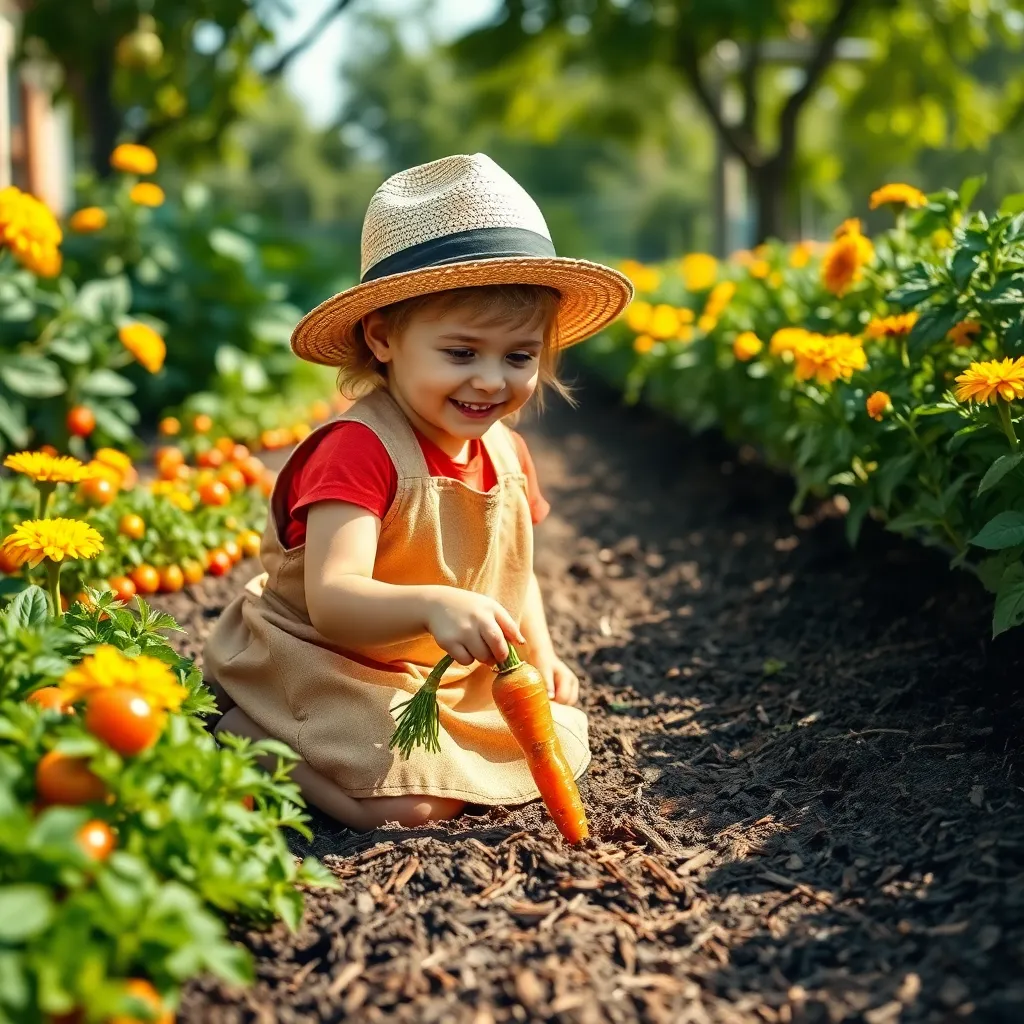
Harvesting is an exciting way for kids to see the fruits of their gardening efforts. Encourage them to start with easy-to-grow plants like radishes or lettuce, which can be ready to pick within a few weeks.
Take the opportunity to teach them how to identify when fruits and vegetables are ready for harvest. Signs of maturity include a change in color, firmness, and size, all of which vary depending on the plant species.
Provide kids with child-sized tools to make the experience more manageable and fun. A small pair of scissors or a kid-friendly garden knife can help them safely cut stems or leaves without damaging the plant.
Involve children in planning the harvest by creating a simple harvest calendar. This can help them understand the growth cycle and anticipate the excitement of picking their fresh produce.
For a more advanced activity, teach them about crop rotation and the benefits of planting different crops after harvesting. This practice can improve soil health and yield better harvests in future growing seasons.
Conclusion: Growing Success with These Plants
In exploring “Gardening Activities For Kids At Home,” we’ve uncovered five key relationship concepts that can blossom through this shared experience. First, gardening teaches patience and nurtures communication as kids learn to wait and observe the growth process. Second, it fosters teamwork, as children and parents work together to plant and maintain their garden. Third, it builds responsibility, as kids take ownership of their plants’ care. Fourth, gardening enhances problem-solving skills, as both children and adults find solutions to unexpected challenges. Lastly, it cultivates empathy, as nurturing plants parallels nurturing relationships.
To plant the seeds of these concepts in your own life, start with a simple gardening project this weekend. Choose a small, manageable task like planting herbs or flowers and involve your kids in every step of the process.
As you embark on this journey of growth and connection, be sure to bookmark this article. It will serve as a valuable resource and reminder of the relationship-building potential gardening holds. By embracing these activities, you’re not just growing plants; you’re nurturing lifelong skills and bonds. Remember, the garden you cultivate today lays the foundation for a flourishing relationship tomorrow. Save this article and let it guide you toward enriching your family connections.

